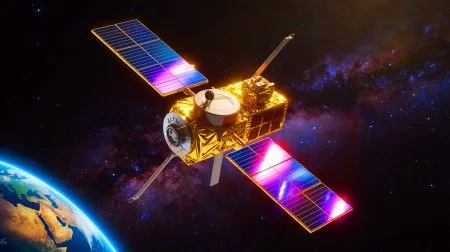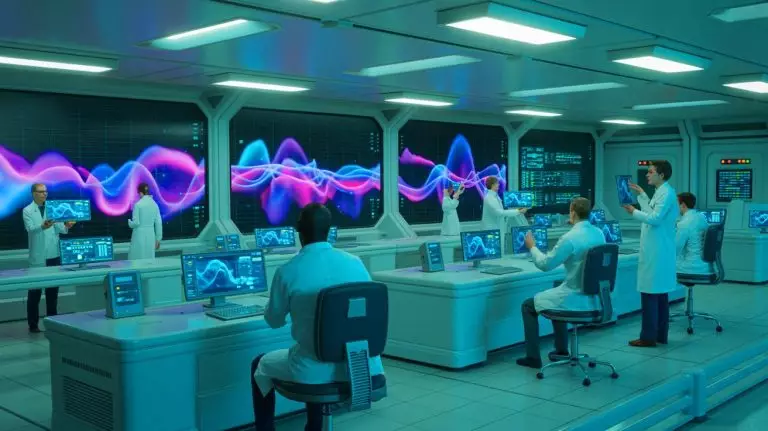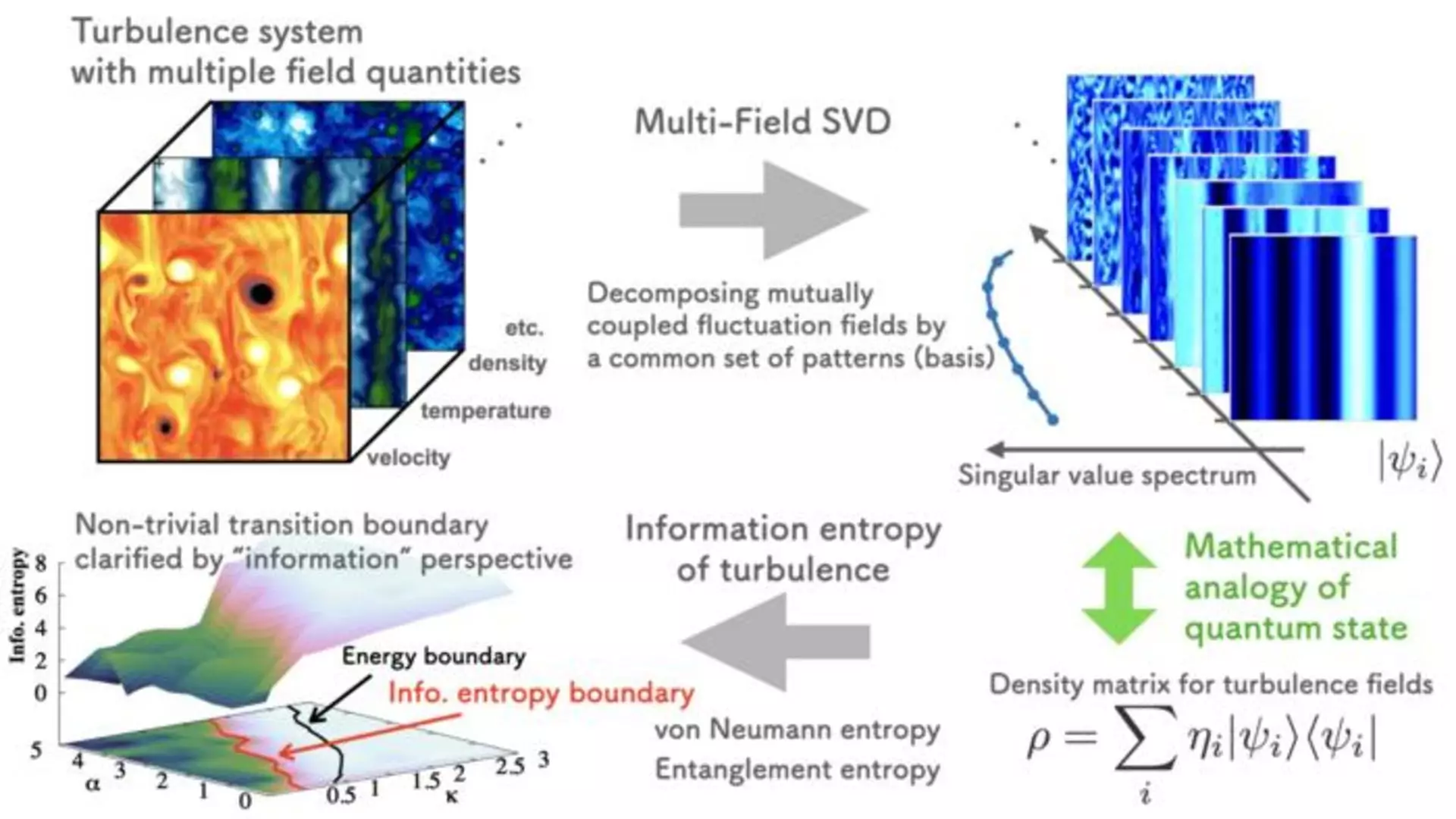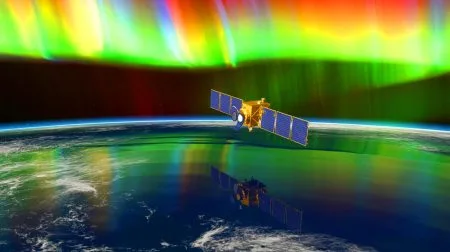| IN A NUTSHELL |
|
The world of plasma physics is on the brink of a revolutionary transformation. Scientists in Japan have pioneered a groundbreaking technique to analyze plasma turbulence, offering unprecedented insights into the complex systems that govern our universe. This breakthrough, led by Dr. Go Yatomi and Dr. Motoki Nakata, leverages the principles of quantum mechanics to address longstanding challenges in understanding plasma behavior. By employing multi-field singular value decomposition, researchers can now unravel the intricate web of interactions within fusion plasmas, paving the way for advancements in nuclear reactors and beyond.
Understanding Plasma Turbulence
Turbulence is a fascinating yet complex phenomenon that occurs in fluids such as air, water, and plasma. It plays a vital role in shaping natural and engineered systems, from weather patterns to ocean currents and even the performance of jet engines. In the realm of plasma physics, turbulence is particularly intricate, involving the simultaneous evolution of multiple interdependent physical fields. These fields interact in ways that are crucial for optimizing the performance of next-generation fusion reactors.
Traditionally, scientists have studied plasma turbulence by examining fluctuations in individual quantities like temperature or density. However, this approach often misses the bigger picture, as it fails to capture localized vortex structures and the complex interplay between multiple interacting fields. This limitation has prompted researchers to develop innovative methods to better understand plasma turbulence and its implications for fusion technology.
The Role of Information Entropy
In a bid to address the challenges of understanding plasma turbulence, the research team introduced the concept of information entropy to their analysis. By applying entropy-based tools from quantum physics, including von Neumann entropy and entanglement entropy, they were able to capture the structural complexity of turbulent fluctuations. These measures revealed a previously overlooked transition in the turbulence state, shedding light on how different turbulence patterns are interconnected.
Through the application of multi-field singular value decomposition, the scientists extracted shared spatial patterns across multiple fluctuating fields. This approach allowed them to identify a sudden shift in the collective patterns of vortices, a process that can significantly impact the confinement of heat and particles in a fusion reactor. By simplifying the complexity of turbulent interactions, this method makes the analysis more accessible and informative.
Implications for Fusion Reactors
The findings of this study have profound implications for the future of fusion reactors. The newly discovered transition in turbulence reflects a shift in how energy and fluctuations move between patterns. This insight is crucial for improving the confinement of heat and particles within a fusion reactor, ultimately enhancing its efficiency and performance. Unlike traditional methods, the use of information entropy offers a more comprehensive understanding of the dynamics at play.
The researchers believe that their approach can be applied beyond plasma physics, with potential applications in a wide range of complex systems. From weather and ocean dynamics to traffic networks and social systems, the principles explored in this study hold promise for understanding and optimizing various phenomena. By integrating energy and information perspectives, this research opens new avenues for exploring the essential dynamics of turbulence and other complex interactions.
Future Directions in Turbulence Research
Building upon their groundbreaking findings, the research team plans to further explore the theoretical correspondence between information entropy in turbulence and principles in quantum information theory. They also intend to test their method on real-world experimental data, expanding its applicability and robustness. By delving deeper into the intricacies of turbulence, scientists aim to unlock new opportunities for technological advancements and scientific understanding.
The study’s impact extends beyond plasma physics, offering valuable insights into diverse fields that involve complex systems with interacting factors. As researchers continue to refine their methods and expand their applications, the potential for transformative breakthroughs in understanding and controlling turbulent phenomena is immense. By embracing a multidisciplinary approach, the scientific community is poised to make significant strides in unraveling the mysteries of turbulence and its far-reaching implications.
The advancements in understanding plasma turbulence highlight the power of interdisciplinary research and the potential for transformative breakthroughs. As scientists continue to explore the intricacies of complex systems, what new discoveries await in the ever-evolving landscape of scientific inquiry?
Did you like it? 4.7/5 (29)









Wow, this sounds like a game changer for nuclear fusion! Thanks for sharing! 🔥
Does this mean we are closer to achieving sustainable fusion energy?
How do they measure “information entropy” in this context?
I hope this isn’t just another overhyped scientific breakthrough. 😑
What are the next steps for this research team?
Can someone explain “entanglement entropy” in simpler terms?
This sounds like a sci-fi movie plot! Can’t wait to see it in action! 🎬
How does turbulence affect the confinement of heat in fusion reactors?
Why haven’t other countries developed similar techniques?
Might this research help in predicting natural disasters?
The mathematics behind this must be incredibly complex!
How does the multi-field singular value decomposition differ from traditional methods?
Is there a way to see this research in action or any demonstrations?
What are the main challenges still facing nuclear fusion technology?
I’m curious about how this impacts social systems. Can anyone elaborate?
This is a great example of how quantum physics can have real-world applications.
Is it too optimistic to think we’ll have nuclear fusion plants within a decade? 🤞
How do scientists ensure accuracy when applying quantum mechanics to plasma analysis?
I’m a bit skeptical—sounds too good to be true. 😅
What does “multi-field singular value decomposition” really mean? Sounds complicated!
Thank you for the detailed write-up! This is truly groundbreaking. 🙌
Will this research have any effect on the cost of developing fusion reactors?
How does this compare to previous breakthroughs in the field?
The integration of energy and information perspectives is definitely intriguing!
I wonder if plasma turbulence is like my morning coffee—always unpredictable! ☕️
More articles like this, please! Science rocks! 🔬
How will this impact future energy policies?
This is fascinating, but how long until we see practical applications? 🤔
Any chance this could help with climate change issues?
Great article, but I’d love more details on the quantum mechanics involved.
The potential applications in weather dynamics are particularly exciting! 🌩️
Is this related to the ITER project in any way?
Could this technique be used to optimize traffic systems? 🛣️
Finally, some good news for the future of energy! Thanks, Japan! 🇯🇵